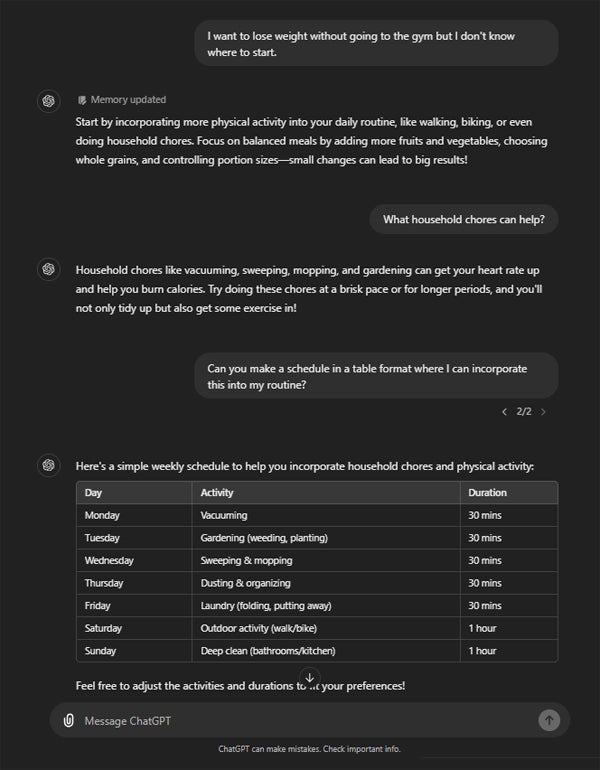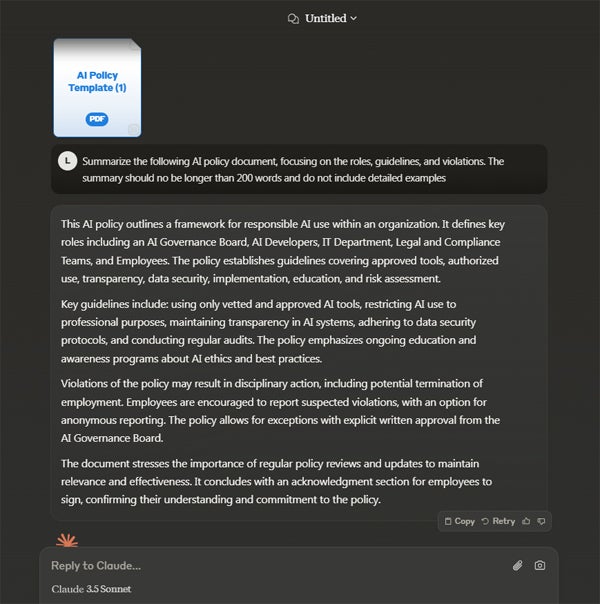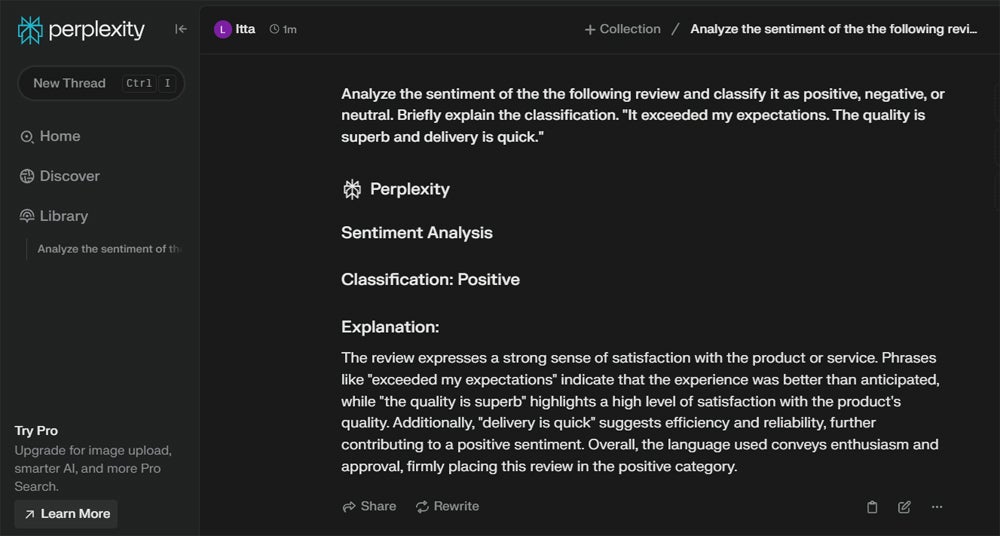Prompt engineering is an important skill that involves structuring AI inputs carefully to get better results from AI models. Writing effective prompts is quickly becoming a must-have skill across industries as more and more organizations turn to AI to handle diverse tasks. Becoming familiar with different prompt engineering techniques, understanding how the process works in real-world scenarios, and knowing how to apply strategies for varied sectors can minimize misunderstanding, increase AI efficiency, and drive useful outputs. Here’s a rundown of the tactics and techniques you need to know to create better outputs, plus five real world prompt engineering examples for a range of use cases to get you on the right track.
KEY TAKEAWAYS
- •Prompt engineering examples give you a head start for different real-world situations and industries. (Jump to Section)
- •Following prompt engineering best practices will help you improve your AI interactions and obtain consistent and useful outputs. (Jump to Section)
- •
- Prompt engineering solutions can aid you in creating prompts from scratch and discovering thoughtfully-crafted prompts from other prompt engineering experts. (Jump to Section)
Featured Partners: AI Software
TABLE OF CONTENTS
Importance of Prompt Engineering in AI
The primary goal of prompt engineering is simple: to refine the human input quality to get better AI output quality. This is important, as the usefulness and quality of a prompt directly influences the precision and the utility of the AI-generated results. Without effective prompt engineering, users are more likely to receive vague, irrelevant, or incorrect responses from artificial intelligence (AI) technologies, leading to wasted time and resources. Prompt engineering ensures that inputs are clear, specific, and have the right context to generate more desirable outputs.
AI Prompt Tactics and Techniques
Relying on tested prompting techniques is imperative in achieving high-quality outputs and maximizing the power of AI tools and applications. These established tactics elevate the accuracy of generative AI results and streamline the entire interaction with the AI.

Use Constraints to Focus Outputs
Specifying limitations within prompts directs the output of AI models by narrowing down the focus of the responses. Constraints make outputs more relevant, more precise, and better aligned with your expectations as the user. These can include limitations in response length, required formats, or particular content guidelines.
Examples
| Limiting Response Length | Summarize “Harry Potter and the Deathly Hallows” by J.K. Rowling in fewer than 300 words. Focus on the main plot, key characters, and significant events. |
| Specifying Output Format | List three advantages of electric cars in bullet points. |
Incorporate Role-Based Instructions
Assigning a certain persona, role, or perspective to the AI allows it to tailor responses based on the designated role. By adding role-based instructions, you guide the model to simulate various personas, like professionals or even fictional characters. This technique can boost the creativity and engagement of the AI tool.
Examples
| Financial Advisor | You are a financial advisor. Give tips for budgeting effectively for college students. |
| Fantasy Character | You are Frodo Baggins from “The Lord of the Rings.” Describe your feelings as you prepare to leave the Shire. |
Master Prompt Chaining for Complex Tasks
Breaking down a larger, more intricate task into smaller, manageable subtasks enables the AI system to perform more accurately. In prompt chaining, inputs are connected in a logical sequence to tackle complex tasks or generate more refined outputs. This aids in debugging and understanding the model’s reasoning process. Prompt chaining is particularly useful in tasks with multiple operations or transformations, like document analysis or problem-solving.
Example of prompt chaining for problem-solving
| Prompt 1 | What are the major challenges facing a startup launching a new AI software? |
| Prompt 2 | Suggest a strategy to overcome each challenge. |
| Prompt 3 | Combine these strategies in a cohesive action plan. |
Limit Ambiguity with Precise Instructions
Providing clear, detailed instructions in your prompt helps eliminate any uncertainties that may trigger vague or inaccurate responses. When you remove ambiguity, you set clear expectations and guide the AI into understanding the intent behind your request.
Example
| Ambiguous Prompt | Describe how to bake a cake. |
| Precise Prompt | Generate a set of step-by-step instructions on baking a vanilla cake for someone who’s never baked before. Include key details like ingredients, preparation time, cooking time, required temperature, and directions for mixing ingredients. |
Add Context for Better Results
A detailed context gives background information or situational details that aid the model in interpreting the nuances of a request. By framing prompts with appropriate context, you can prevent the AI system from producing generic results.
Example
| Prompt Without Context | Write an introduction about machine learning. |
| Prompt With Context | Write an introduction about machine learning for a non-technical audience unfamiliar with the concept. Use simple language and relatable examples and avoid technical jargon. |
Iterate and Refine Prompts for Complex Queries
You can use a series of follow-up prompts to improve the quality of AI-generated responses. Start with a broad prompt that addresses a complex topic and add follow-up prompts, letting the AI expand on its previous answer. Iterative refinement fine-tunes the AI’s response through interaction.
Example
| Initial Prompt | Write a cover letter for a job application. |
| Follow-Up Prompt 1 | Make it more specific to a marketing position. |
| Follow-Up Prompt 2 | Make it sound more professional and highlight my leadership skills. |
Direct Outputs With One-Shot and Few-Shot Prompting
Offering clear examples of what the desired response should look like can influence the AI’s output. This can be done with one-shot prompting—giving a single example—or few-shot prompting, using multiple examples.
Examples
| One-Shot Prompting | Write a reminder email for my 2 PM client call tomorrow. Example: “Hi team, just a quick reminder about our meeting tomorrow at 10 AM. Looking forward to it.” |
| Few-Shot Prompting | Write a thank you note for receiving concert tickets as a gift. Example 1: “Thank you for the beautiful sweater. I can’t wait to wear it!” Example 2: “I love the book you got me! I’m excited to start reading it!” |
Five Real-World Prompt Engineering Examples
Depending on your desired outcome, certain prompt engineering examples can help you achieve better results. These examples will assist you in directing the AI in different functions, from engaging in conversations and generating images, to writing code and analyzing sentiment.
Chatbot Conversation Prompts
Chatbot conversation prompts are a type of natural language processing (NLP) prompt that simulates human-like interactions between users and AI-powered chatbots. These prompts enable chatbots to engage in coherent and context-aware conversations.
In the prompt chaining example below, I asked ChatGPT how to lose weight without going to the gym. I then continued the conversation with follow-up questions and further refined the prompt by asking the AI tool to create a schedule in a specific table format to help integrate the chores into my daily routine.

Image Generation Prompts
These types of prompts steer the AI to produce visual content based on detailed instructions and involve specifying elements, such as objects, environments, or artistic styles. By providing precise directions on composition, color schemes, and even the mood of the image, you can control the AI-generated image’s creative and technical aspects.
Here, I used starry.ai to produce an image of a desolate city at night, with a lone figure standing near an abandoned vehicle. I specified that the color palette should be dark, and I requested a hyper-realistic style with an eerie mood. This approach combined context, constraints, and precision to guide the AI image generator in making a highly-detailed and atmospheric visual representation.

Code Generation Prompts
These prompts guide AI tools to write functional code snippets or scripts based on clear directives. Code generation prompts include requirements that define how the code should perform tasks, handle inputs, or structure outputs. With exact prompts, the AI can write code tailored to user needs and use cases.
I used Ninja AI in the example below to generate a Python script that creates a secure, random password of 12 characters. I made it clear that the output must include at least one uppercase letter, one lowercase letter, one number, and one special character. The limitations and exact details guided Ninja AI to produce a useful code snippet for secure password generation.

Text Summarization Prompts
Prompts for text summarization instruct AI tools to condense lengthy documents or passages into shorter, easily digestible content. These clarify the focus required and enables the AI to extract and present the most relevant information.
I used Claude to summarize an AI policy document from eWeek constrained to 200 words. I asked for a summary focused on the key guidelines, roles and responsibilities, and violations. Claude was able to produce the required output in 168 words.

Sentiment Analysis Prompts
Prompts for sentiment analysis tell the AI models to assess and categorize the emotional tone of a given text, which can be customer feedback, social media posts, and product reviews.
In the example below, I directed Perplexity AI to analyze the sentiment of a customer review and asked it to classify the sentiment as positive, negative, or neutral. I also asked it to add a brief explanation for its classification. Being precise in the classification criteria and requesting for a justification guided the AI to produce the expected result.

Six Prompt Engineering Examples for Industry-Specific Tasks
Using prompt engineering, businesses can tailor AI inputs to achieve targeted results across various industries. Whether it’s improving patient care in healthcare or composing personalized marketing emails, the process empowers organizations to make the most out of AI tools for their enterprise needs.
Healthcare
In healthcare, AI can assist in analyzing large volumes of medical data, but the prompt must clearly define what particular type of information is needed. Prompt engineering helps clinicians get focused insights from patient records, lab results, saving time and supporting more informed decisions.
Sample Prompt: Given the following lab results, symptoms, and medical history, suggest potential conditions for considerations for a 45-year-old patient. Also, list relevant follow-up tests to narrow down diagnosis.
Marketing
AI-powered marketing tools can help you create marketing campaigns and messages. However, by using prompt engineering in interacting with these tools, you can ensure that they incorporate distinct customer behavior patterns.
Sample Prompt: Analyze data on recent customer feedback and purchase history to recommend products for our holiday campaign. Highlight the top three products that will appear to budget-conscious buyers.
Customer Support
Well-crafted prompts can boost the accuracy of AI-driven customer support systems. By detailing customer concerns and desired outcomes in your prompt, you can elevate the quality of automated customer service interactions.
Sample Prompt: Based on the provided customer complaint about a malfunctioning product, draft a personalized response offering troubleshooting steps. Recommend a replacement of the issue persists.
Legal
AI tools can streamline legal processes, like reviewing contracts or summarizing complex and lengthy legal documents. With prompt engineering, legal teams can direct AI to extract certain clauses or flag problematic sections.
Sample Prompt: Review this employment contract and identify any areas that may present legal risk under current US employment laws. List problematic areas in bullet points.
Education
AI models can produce personalized learning experiences in the educational sector, but only if the prompts guide them toward building relevant content. Through prompt engineering, educators can create tailored lesson plans, quizzes, or other resources that meet diverse student needs.
Sample Prompt: Using the following lesson as a reference, generate a beginner-level quiz for highschool biology students. Focus on key terms and create ten multiple-choice questions that assess student understanding of these concepts.
Recruitment
AI can assist hiring managers by writing customized interview questions based on the particular requirements of a job role. Prompt engineering allows for the creation of focused, appropriate questions that evaluates candidates on both technical skills and behavioral attributes.
Sample Prompt: Based on the given job description for a Senior Software Engineer position, generate ten technical and behavioral questions. Make sure that the questions cover software development skills, problem-solving abilities, and leadership experience.
Five Best Practices in Prompt Engineering
Following four key practices for prompt engineering helps align AI responses with user needs. These principles handle common challenges, such as ambiguous prompts and biases, and they promote ongoing enhancements to the AI. With prompt engineering best practices, you can increase the quality of AI interactions and get more consistent and valuable results.

Maintain Clear and Concise Language
Being clear and straightforward in prompt engineering is important to ensure that the language model accurately interprets requests and responds accordingly. Clarity minimizes ambiguity and complexity. Conciseness helps guide the AI toward focused output. Clear and concise language reduces the likelihood of misinterpretation, resulting in better quality responses.
Refine Prompts Through Iterative Testing
By systematically experimenting with different phrasing, structures, and contexts, prompt engineers can determine which input variations yield the most pertinent responses. Iterative testing facilitates continuous improvement, as each iteration brings insights into the model’s behavior and preferences, allowing engineers to fine-tune prompts for optimal clarity and precision.
Manage AI Behavior With Detailed Prompts
With specific and well-structured prompts, engineers can guide the AI tool to exhibit desired behaviors, making sure that the output aligns with user expectations. To effectively manage AI behavior and steer its responses, give exact details on the format, tone, and depth of your target results. Thoughtful prompt engineering enhances the predictability and reliability of AI-generated outputs.
Use Model Feedback
Evaluating feedback from outputs enables prompt engineers to spot biases, errors, or inconsistencies. This guides them to make necessary prompt adjustments for clarity and relevance. Relying on model feedback fosters continuous learning, resulting in more contextually-appropriate AI outputs.
Define Success Metrics for Effective Prompts
In prompt engineering, establishing clear success criteria aids engineers to assess prompt performance. By setting measurable and customized benchmarks tailored to the project goals, they can evaluate the AI’s accuracy, user engagement, and task completion. This provides organizations with a structured way of monitoring whether prompts are achieving their intended goals.
Three Tools for Improved Prompt Engineering
There are several prompt engineering tools that can assist you in crafting and optimizing prompts for different AI models. These platforms offer significant support by increasing the quality of your prompts, helping you get meaningful results.
PromptBase
PromptBase is a specialized prompt engineering marketplace that caters to users of various AI models, including ChatGPT, DALL-E, and Midjourney. It offers a platform where you can design and sell prompts and explore thousands of other prompts crafted by expert AI creators. Its extensive prompt collection allows you to find tailored prompts for better outputs while saving time and reducing API costs. Its community-driven ecosystem encourages innovation and sharing in prompt engineering and creation across diverse categories, like art and marketing.
PromptBase’s monthly subscription starts at $9.99, which includes 1,250 credits for prompt creation. Keep in mind that since the platform hosts a vast selection, you might find it challenging to sift through the sheer volume of prompts to find the best ones for your needs.

PromptHero
PromptHero is an online platform that serves as a marketplace for AI-generated art prompts, letting you discover, share, and sell carefully-designed prompts for varied AI image generators, like Stable Diffusion, Flux, and Midjourney. It showcases the practical application of prompt engineering and helps artists learn effective prompt crafting techniques with crash courses on leading AI art tools. PromptHero features a wide range of engineered prompts for multiple categories, styles, and themes, too.
Its monthly subscription of $9 includes 300 credits. On the downside, the platform offers less value for money compared to competitors, as users get fewer image generations for their monthly subscription.

PromptPerfect
PromptPerfect is an advanced AI prompt generator and optimizer that transforms raw inputs into detailed and refined prompts. Aside from its automatic prompt optimization, this tool delivers multimodal support for both image and text inputs, as well as multilingual capabilities that allow you to type in prompts in several languages. Additionally, this AI platform has an interactive assistant that collaborates with you as you brainstorm prompt ideas.
Its monthly paid plan starts at $19.99 with daily limits to prompt optimization and AI assistant interactions. It’s also worth noting that PromptPerfect has a complex interface that may be overwhelming to new users.

Bottom Line: The Right Prompt Engineering Examples Lead to High-Quality AI Outputs
Using the right prompt engineering examples in this guide will empower you to maximize the capabilities of various AI technologies. However, these examples serve only as a stepping stone in your journey toward mastering prompt engineering. The key to success lies in developing a deeper understanding of the functions of prompt engineering techniques, so you can craft your own tailored prompts to reach specific outcomes and reach your own goal.
Read our article on top AI companies to discover the most influential names shaping industries today.
